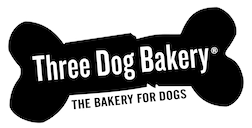Ready. Set. Go! – What’s That Smell?


If you’re looking for an activity you can do with Fido, one that comes naturally to him, look no further than his nose.Dogs interpret the world primarily by using their sense of smell.Humans have approximately six million scent receptors, whereas dogs can have up to 300 million.The part of a dog’s brain that interprets smell is forty times greater than a human’s.It’s believed that dogs can identify smells up to 10,000 times better than humans can.That’s a lot of olfactory capability.So much so, that they can even smell things buried forty feet below ground!It’s no wonder that many dogs lead with their noses and enjoy every minute of it.Why not exploit that fact and take up a hobby that taps into Fido’s superior skill?This is where the fun sport of Nose Work, also known as Scent Work, comes in.
Nose work, which is based on the work of scent detection canines, involves finding cotton swabs which have been previously saturated with one of four essential oils; cypress, birch, anise, clove and sometimes even the handler’s scent.The swabs are then hidden, and the dog, always on leash or in a secure setting, must find them.Depending on the organization offering the competition or trial, a dog may have to pass an odor recognition test before participating.Once he has done so, he may enter trials.A trial consists of searches that take place in four elements.There are different organizations that offer nose work trials; such as the National Association of Canine Scent Work (NACSW), the United States Canine Scent Sports (USCSS), the United Kennel Club (UKC) and the American Kennel Club (AKC).Each with different titles, different rules and different names for the elements.The AKC, for example, calls the elements container, interior, exterior and buried.In the container element, a dog has to determine which of the containers (cardboard box, luggage or backpack) has the scent in it.For the interior element, he must find the scent in a home type setting.The exterior element takes place in an outdoor setting, complete with vegetation, objects and structures.In the buried element, the scent is hidden underground and the dog must point out the area where it is buried.There are four difficulty levels in each element – novice, advance, excellent and master.There is even a detective level which mimics the work of true detection canines.Dogs must successfully complete each of the four search elements within the allotted time in order to qualify at that level.There may be more than one hide per area, depending on title level.Title levels in the AKC are SWN, SWA, SWE, SWM, etc.Adding to the challenge of nose work is the fact that scents can be hidden above the natural eye line of the dog, thus he must know to look for scents all around, even above him.Once the dog finds the scent, he will notify the handler in whatever way he was trained to notify.Some examples are pawing, sitting, pointing, lying down or barking.The dog does all the work, while the handler is basically along for the ride.The handler will sometimes gently guide the dog in the direction of the search and does have the responsibility of notifying the judge when the dog has located the scent.
The AKC allows any dog of pure or mixed breed to compete in Nose Work, provided it is at least six months old and registered with them.It is a good sport for any dog, even your out-of-shape couch potatoes, as it is not strenuous.Among the other advantages of this sport is the fact that you do not necessarily need to take a class to teach nose work.You can do all the training yourself with the aid of videos or books.And, since nose work trial searches take place in real life settings, you can train in your own home or anywhere you choose.That said, you can find classes and clubs to assist you in starting and help you advance in your training.

If you enjoy Christina’s writing, check her books out! She is the author of “Chester Gigolo: Diary of a Dog Star” and “Insider Training: Chester Gigolo’s Dog Training Secrets Revealed” for which she won the 2016 DWAA Captain Haggerty award for Best Training Book and the 11th Annual National Indie Excellence Award (Animals & Pets). She is also a contributing author to “Animal Stars: Behind the Scenes with Your Favorite Animal Actors”. She has written multiple articles which have appeared in various international publications.
Thank you to Fido Photography!
